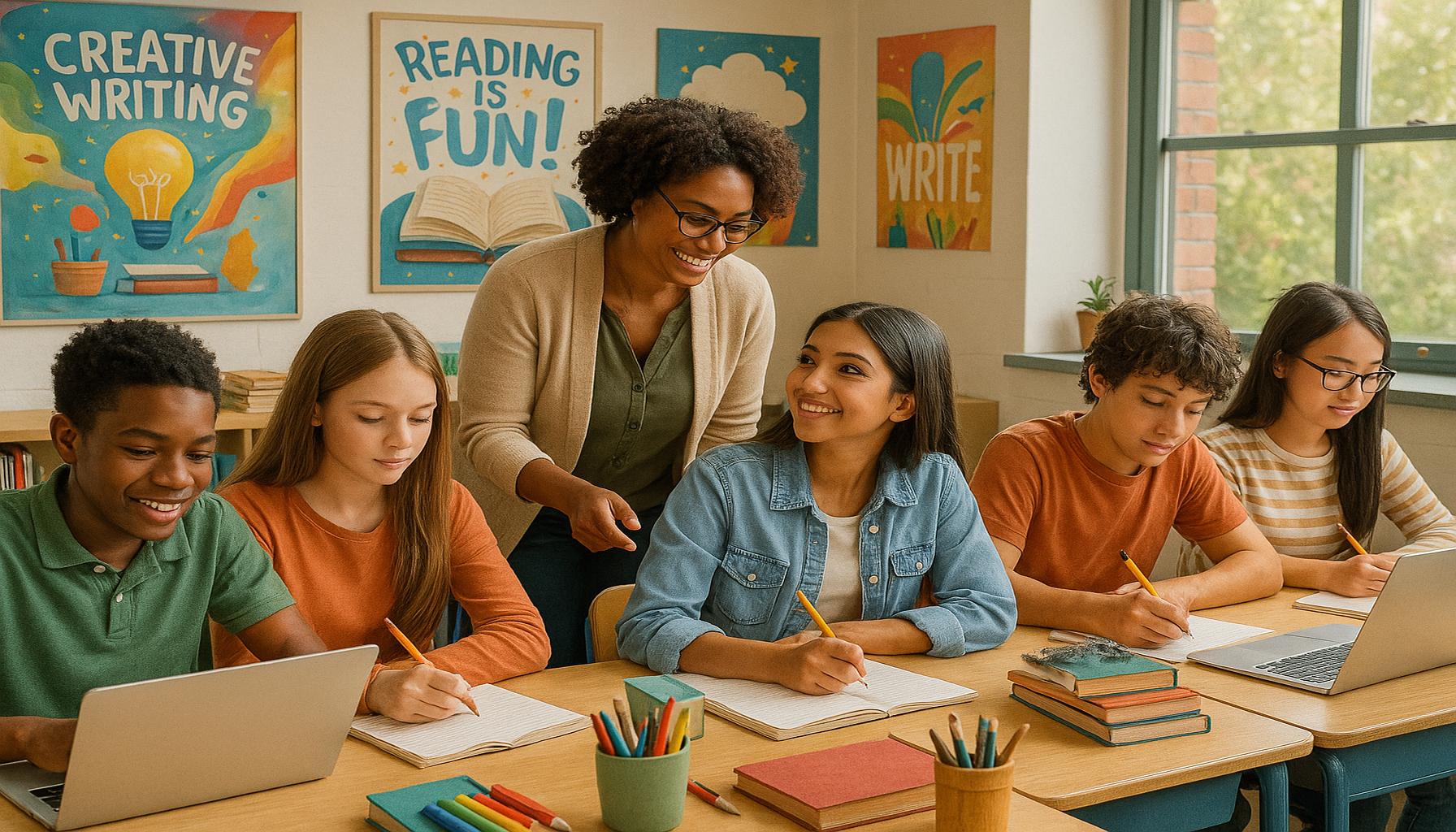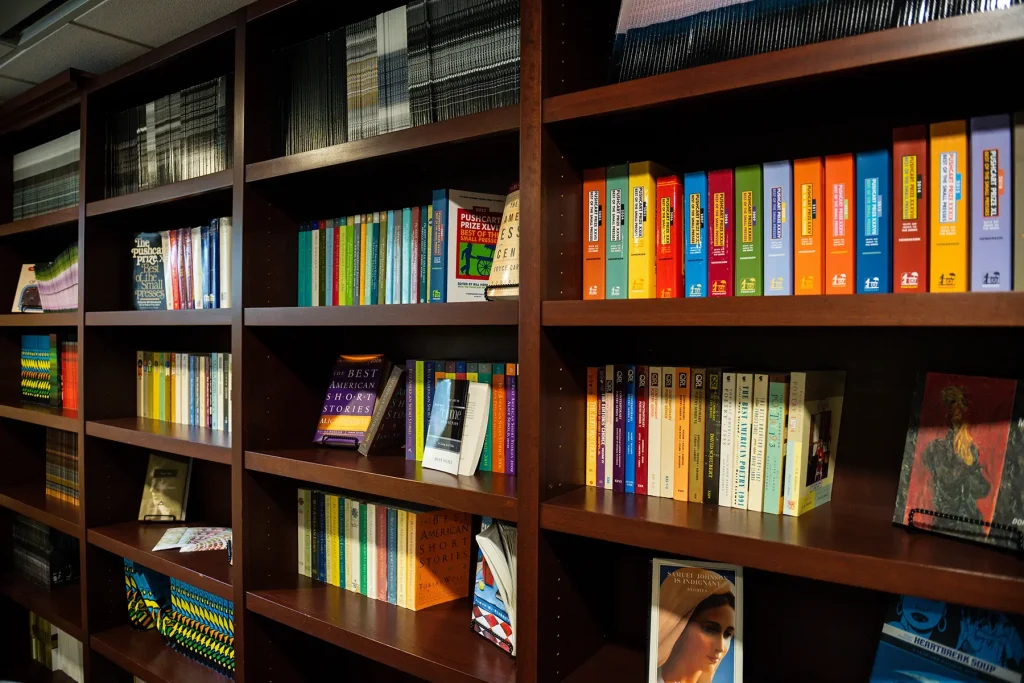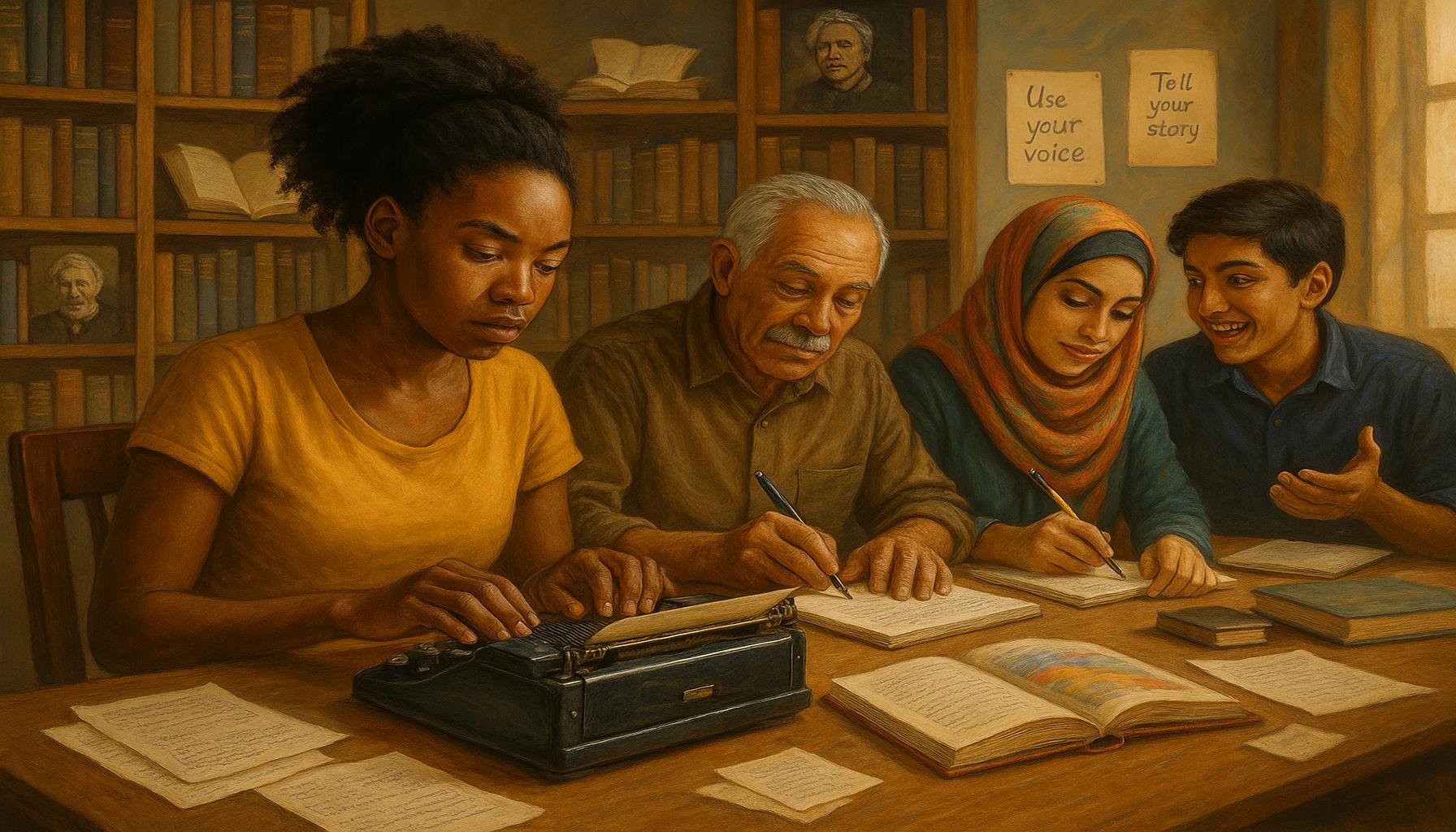The Impact of Creative Writing in Education: Fostering Learning Through Written Expression

Understanding the Impact of Creative Writing in Education
In recent years, the integration of creative writing into educational programs has gained significant momentum, highlighting its importance as not just an artistic endeavor but a crucial educational tool. This shift is rooted in the belief that writing, especially in a creative context, empowers students to articulate their thoughts and emotions in ways that resonate personally and impactfully.
Developing Their Voice is a fundamental aspect of creative writing. Students are encouraged to explore various genres and writing techniques, whether through poetry, short stories, or plays. For instance, an eighth-grade student might engage in writing a fictional diary from the perspective of a historical figure, allowing them to connect with history on a personal level. This creative exercise not only fosters imaginative thinking but also boosts confidence as students see their unique perspectives taking form on the page.
Another key benefit is how creative writing enhances cognitive skills. By engaging in storytelling, students must think critically about plot structures, character development, and thematic elements, which sharpens their analytical skills. For example, composing a narrative that intertwines scientific concepts with a fantasy story encourages students to think critically about both disciplines and how they can coexist. Research supports this by showing that students who engage in creative writing often outperform their peers on critical thinking assessments and standardized tests, as the skills gained in writing translate seamlessly into other areas of study.
Furthermore, creative writing promotes empathy and cultural awareness. Writing from diverse perspectives allows students to step into the shoes of others, facilitating a deeper understanding of varied experiences. A powerful exercise could involve students writing letters from the viewpoint of someone in a challenging situation, such as a refugee or someone with a disability. Engaging in these exercises can develop compassion and awareness of societal issues, enriching their understanding of the world around them.
The integration of creative writing is vital not only for individual student growth but also for enhancing the overall curriculum. When students engage in writing across disciplines—linking art with social studies or science with literature—the educational experience becomes holistic. Such interdisciplinary projects inspire critical thinking, creativity, and collaboration among peers, skills that are essential in today’s interconnected world.

As educators aim to prepare students for the complexities of modern life, integrating creative writing into the curriculum is essential. In a world where technology reigns and quick communication often overshadows deep thinking, creative writing stands as a beacon, encouraging thoughtful deliberation and creativity. The exploration of this topic reveals not just the educational benefits of creative writing, but highlights its potential to shape a generation of thoughtful, articulate, and empathetic individuals ready to face the complexities of the future.
In essence, incorporating creative writing into classroom practice is no longer merely a trend; it is indeed a transformative approach that nurtures a range of essential skills. As we uncover the profound effects of creative writing within educational settings, it becomes clear that its influence extends far beyond the classroom, potentially affecting future generations and fostering a more compassionate and creative society.
DISCOVER MORE: Click here to find out how storytelling enhances portrait photography
Nurturing Critical Thinking and Creativity
The benefits of integrating creative writing into education extend far beyond mere expression; it acts as a powerful catalyst for critical thinking and creativity. When students engage in creative writing exercises, they are not only crafting stories but also enhancing their ability to analyze information and form coherent arguments. This connection is particularly significant in an educational landscape that increasingly emphasizes problem-solving skills and innovative thinking.
For instance, consider a high school English class tasked with rewriting a classic tale, such as Shakespeare’s “Romeo and Juliet,” but with a contemporary twist. In this exercise, students must critically evaluate character motivations, societal norms, and the consequences of choices within both the original and their reimagined narratives. This creative process encourages students to deconstruct existing ideas and synthesize new concepts, effectively escalating their cognitive engagement.
The cognitive demands of creative writing can be summarized into several key areas:
- Analytical Thinking: Students must assess narrative structures and explore theme relevance, leading them to think deeply about how to present their narratives.
- Problem-Solving Skills: Crafting a compelling story often requires overcoming creative obstacles, encouraging students to devise numerous solutions to storytelling challenges.
- Imagination and Innovation: Creative writing requires students to envision the extraordinary, promoting innovative thought which is vital in various academic areas and future careers.
Additionally, studies indicate that students participating in creative writing activities tend to show improved academic performance overall. According to a report from the National Council of Teachers of English (NCTE), students who engage in creative writing not only manifest enhanced writing skills but also exhibit heightened abilities in subjects ranging from mathematics to social studies. This connectivity suggests that the skills acquired through creative writing are transversal, bolstering overall academic achievement.
Moreover, creative writing serves as a bridge to emotional and social learning. Through their written narratives, students explore themes such as identity, resilience, and community, which foster emotional intelligence. By articulating their thoughts and feelings on paper, they develop a greater understanding of themselves and others, equipping them for collaboration and interpersonal relationships in the classroom and beyond.
The role of creative writing in developing essential life skills does not stop in the classroom. As students construct stories that reflect their own experiences or imaginatively explore the lives of others, they cultivate a sense of understanding and respect for diverse perspectives. This empathetic approach to writing ensures that students are not just passive learners but active participants in their education, embodying the very essence of a compassionate society.
As we delve further into the interplay between creative writing and educational achievement, it becomes evident that this practice is not merely beneficial but *imperative* for fostering a generation equipped with the skills necessary for an increasingly complex world. The unique synthesis of creativity and critical thinking nurtured through creative writing lays the groundwork for innovative thinkers capable of navigating challenging societal landscapes.
The Transformative Power of Creative Writing
Creative writing is not just a tool for self-expression; it is a transformative educational method that enhances critical thinking and emotional intelligence. When students engage in creative writing, they are encouraged to tap into their imagination, leading to enhanced problem-solving skills. This natural tendency to think outside the box can be advantageous in various academic disciplines. By creating narratives, students learn to structure their thoughts clearly and logically, an invaluable skill across all subjects.Furthermore, creative writing fosters empathy. By crafting characters and immersing themselves in their experiences, students gain a deeper understanding of different perspectives. This promotes a more inclusive classroom environment where diverse voices are celebrated. Research indicates that immersive storytelling can create emotional connections, making literature lessons much more impactful. Moreover, the act of writing itself enhances language skills. Students develop a richer vocabulary and a better grasp of grammar, as they explore different genres from poetry to fiction. Engaging with various styles nurtures adaptability in their writing, preparing them for future academic and professional endeavors.Creative writing also serves as a platform for individuals to articulate their thoughts on social issues, enhancing their critical voice in a supportive setting. This not only bolsters their written communication skills but also cultivates active citizenship and awareness of societal challenges. Students learn to express their opinions responsibly and constructively, a vital skill in today’s globalized world.Through workshops, peer feedback, and reflective practices, creative writing allows students to experience collaborative learning. This interactive approach builds community and inspires students to share their uniqueness, ultimately fostering a sense of belonging within educational environments.In conclusion, the integration of creative writing in education goes beyond enhancing language and composition skills; it plays a crucial role in developing well-rounded individuals capable of critical thought, emotional awareness, and collaborative teamwork. The continuous exploration of imaginative narratives can indeed shape future leaders, thinkers, and creators.
DIVE DEEPER: Click here to discover creative ways to use yarn scraps
Building Communication and Collaboration Skills
Another significant impact of creative writing in education lies in its ability to enhance communication and collaboration skills among students. Through the art of storytelling, students learn not only to convey their unique voices but also to articulate complex ideas, engage their peers, and express themselves with clarity. These skills are essential in both academic settings and the modern workforce, where effective communication often determines success.
Group writing projects, such as collaborative storytelling or scriptwriting for a short film, encourage students to work together, negotiate ideas, and find common ground. This collaborative process fosters a sense of community and belonging among students, as they learn to value each other’s perspectives while merging them into a cohesive narrative. For example, a middle school classroom might divide into teams tasked with creating a collective story, obliging students to communicate openly about plotlines, character development, and style choices. Through this creative collaboration, they inherently develop essential teamwork skills that will serve them well in their future endeavors.
The impact of creative writing on communication skills extends into the realm of public speaking as well. As students read their work aloud to peers, they practice presenting their ideas confidently, refining their speaking skills, and reducing anxiety associated with public performances. This habit not only enhances their verbal articulation but also enables them to think on their feet; skills that are invaluable in the job market, particularly in fields requiring public engagement or collaboration, such as business, education, and the arts.
A study conducted by the University of California found that students involved in creative writing programs showed a remarkable increase in both their writing proficiency and their ability to communicate effectively in spoken formats. The report highlighted how these students often outperformed their peers in standardized testing scores related to writing and verbal reasoning. These findings reinforce the notion that creative writing acts as a precursor to success in various forms of assessment, indicating its potential role in reshaping educational outcomes.
Furthermore, the benefits of creative writing extend to students who may struggle with traditional educational models. For struggling readers and writers, engaging in creative writing can mitigate feelings of frustration and anxiety, presenting literacy as a liberating form of expression. Programs dedicated to creative writing often employ prompts that resonate with the students’ personal experiences, allowing them to build confidence in their abilities while fostering a love for language. As such, addressing literacy challenges through creative writing can lead to engagement, motivation, and resilience among students who might otherwise disengage.
Moreover, incorporating creative writing into the curriculum opens pathways for interdisciplinary connections. For instance, when students write historical fiction, they delve into historical research, gaining insights into the eras they explore through storytelling. This not only illustrates the content but resonates emotionally, making history come alive in a way that traditional methods can sometimes fail to achieve.
Enhancing communication and collaboration through creative writing correlates with broader educational objectives—developing well-rounded individuals who can navigate the complexities of contemporary society. In a world that increasingly values creativity, adaptability, and emotional intelligence, the role of creative writing in education stands firm as a crucial element in shaping future leaders.
DIVE DEEPER: Click here to uncover the power of writing as a therapeutic tool
Conclusion: A Transformative Approach to Education
In summary, the impact of creative writing in education extends far beyond mere literary skills; it represents a transformative approach to learning that nurtures critical thinking, emotional intelligence, and social skills. By integrating creative writing into the curriculum, educators can unlock students’ potential to express themselves authentically and explore complex ideas in dynamic ways. This art form empowers students to connect with their peers and the world around them, fostering a sense of community and collaboration that enriches the educational experience.
As research highlights, students who engage in creative writing demonstrate enhanced proficiency in communication and problem-solving, equipping them with invaluable tools for future success. The enhanced focus on storytelling not only cultivates a love for language but also makes learning more accessible and engaging for students of all backgrounds. Especially for those who struggle with conventional methods, creative writing becomes a powerful means of expression, linking literacy with self-discovery and resilience.
Moreover, the intersection of creative writing with other subjects creates opportunities for interdisciplinary learning, allowing students to explore history, science, or social issues through a narrative lens. This method fosters critical analysis and connects learners to content in more meaningful ways, ultimately enhancing their overall educational experience.
As we reflect on the importance of nurturing writing skills within the educational framework, it is evident that creative writing is not just a supplementary activity but rather a fundamental component that can reshape how students learn and thrive. By prioritizing creative expression, we pave the way for innovative thinkers and compassionate leaders who are prepared to navigate the challenges of the modern world. As such, the integration of creative writing in education stands as a beacon of hope, illuminating pathways for our future generations.



